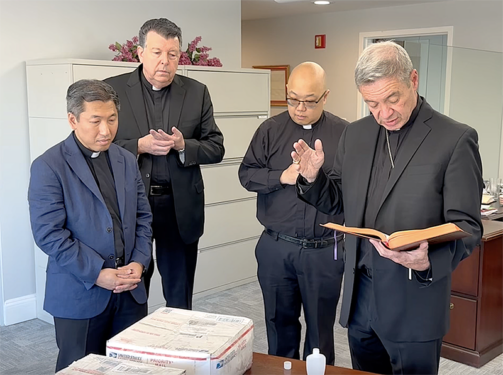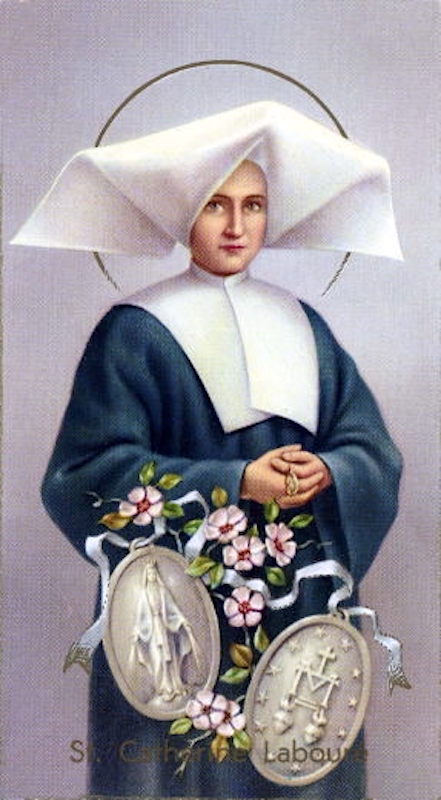
WINDSOR TERRACE — Three modern-day missionaries to China, with the help of an anonymous donor, are continuing the instruction the Blessed Mother gave to a French nun in the early 1800s to create the Miraculous Medal.
People who communicate with simplified Chinese, the official written language of China, can now read this medal’s famous inscription.
It states: “O Mary, conceived without sin, pray for us who have recourse to thee.”
Bishop Robert Brennan recently blessed a shipment of Miraculous Medals in simplified Chinese that arrived at the offices of the Diocese of Brooklyn. Widely known as the “Diocese of Immigrants,” its boundaries are believed to contain 500,000 speakers of Chinese. An estimated 3,000 of them attend Mass on Sundays.
“We pray, in a very particular way — with the people of China and those here in Brooklyn and Queens who come from China — that these medals might be a source of inspiration, consolation, hope, and of strength,” Bishop Brennan said.
Observing the ceremony was Father Vincentius Do, coordinator of the Chinese Apostolate in the diocese.
Also on hand were Msgr. Joseph Grimaldi, vicar general for the diocese and pastor of St. Bernard of Clairvaux Parish in Bergen Beach, and Father Andrew Tsui, parochial vicar at St. Bartholomew’s Parish in Elmhurst.
The Blessed Mother appeared to the French nun, St. Catherine Labouré, in 1830 and instructed her to share the directive to create the “Miraculous Medal of Our Lady of Graces.” Commonly called the “Miraculous Medal,” those with devotions to it seek intercession and graces.
“It has been produced in many of the major languages, however, it has never been produced in simplified Chinese,” Father Tsui said.
That is, until the three missionaries resolved to get the medal cast in the language most understood by people in China and Chinese immigrants in the U.S.

Father Tsui said the three missionaries each insisted on anonymity, as did the donor who helped pay for the medals.
What is remarkable, however, is that the trio each began the quest independently, Father Tsui said.
All three contacted Steve Dawson, founder and president of St. Paul Street Evangelization in Warren, Michigan, which creates Miraculous Medals. Each missionary subsequently learned that the other two had similar plans.
What’s more, Father Tsui added, is that all three are longtime friends, and they were in different parts of the world when the idea for the Chinese Miraculous Medal came to them. The missionaries now believe their motivations were divinely inspired, he said.
The medals’ arrival at the diocese, and Bishop Brennan’s blessing of them, happened in time for them to be distributed to parishes on the feast of Our Lady of Sheshan, May 24.
“It’s such an important thing to have,” Father Tsui said. “Because isn’t it wonderful to know that your mother is showing and telling you that she loves you, and in your own language?”
Victor Lin, 15, an altar server at Father Tsui’s parish, received one of the medals. He said it proves that the Catholic faith among the Chinese is real — not a foreign religion.
“I feel very happy,” he said. “This Miraculous Medal has been around for almost 200 years. And only now is it including Chinese.”
But adding Chinese to the many languages offered on the medal is good for all Catholics, Lin said.
“I feel like it’s pretty important,” he added. “It’s connecting people from different ethnicities.”
